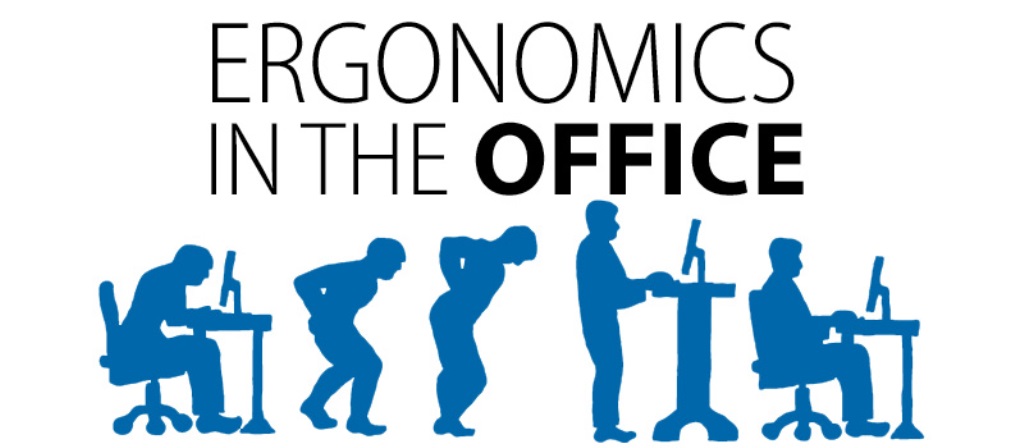Working from home is a Pain in the Neck! Literally! Office Ergonomics for a Healthy Workplace

Food Allergy Hospitalisations and Fatalities are Increasing!
04/10/2019
COVID-19 Return to Work Safely Checklist
15/05/2020Working from home? Office Ergonomics for a healthy workplace. Work is a Pain in the Neck! Literally! Here’s what you can do about it. Sorting out your desk space is a good place to start. Make 2020 the year when you reduce stress and have a healthy working environment.
Bad office ergonomics and long hours of sitting in front of computer screens can lead to joint pains and long term musculoskeletal disorders. Every employee who uses a computer for more than an hour a day is legally entitled to a VDU / DSE Assessment by a competent assessor who carries out work place assessments and trains employees on best practice desk set up.

Some tips for good working from home office ergonomics & desk set up.
1 – Start with your chair. Does it provide good lumber support? It should have a 5 castor base and features should include adjustable seat height, back rest and arms. Not only should the back move up and down but you should be able to adjust the rocker so you can sit slightly back, taking pressure off the hips.
2 – Chair height is important to reduce over stretching. Your arm should form a 90 degree angle just above desk height. Don’t make the mistake of lowering the chair so your feet can reach the ground. This only causes your arms to overreach. If your feet are not stable on the ground a footrest will be required.
3- Next, your head! Did you know the average head weighs around 5kg? Do you slouch or look down a lot? If so, you are putting incredible strain on your neck, shoulders and back. Making sure your screen is positioned at the right height is very important. Sit up straight, look straight ahead – your screen should be at least an arms length away and your eyes should land at the top of the screen.
4 – Being able to type properly is defiantly beneficial as you won’t need to look down so much. Another way to prevent strain from looking down is to use a document holder so you can prop up your diary or notes to eye level in line with your screen.
5 – Are your keyboard and mouse in good working order and easy to reach without over stretching? If you experience wrist strain, perhaps you could try an ergonomic mouse. Do you spend a lot of time on the phone, perhaps balancing it between your shoulder and ear? A simple and very effective tool here is a headset. They alleviate strain on the neck and also free up your hands meaning you can multitask minus the strain.
6 – Take Screen Breaks! In every hour, spend at least 10 minutes not looking at your screen. Try to alternates your tasks. Break up screen time with filing, meetings, old fashioned paperwork, phone calls. When you stare at a screen your blink rate is considerably reduced. Micro breaks: Every 20 minutes look away from the screen and blink 20 times to refresh the eyes.
7 – Stand up as often as you can. Sitting for long hours is unhealthy and puts a lot of strain on your body. If you are ever given the option of a height adjustable desk that you can use in standing position take it. More and more offices are introducing standing desks and feedback from employees is great. If you do not have a standing desk, set a reminder to stand up every hour and stretch.
Every employee who uses a screen for more than 1 hour in their everyday work is legally entitled to an ergonomic assessment and also the right to an eye-test. Even if employees are working from home , employers still have a legal responsibility.
Contact us for more information on office ergonomics and workplace requirements or to book VDU assessments. We can do virtual assessments Choice Training also run VDU / DSE Assessor courses that train you to become an assessor.









